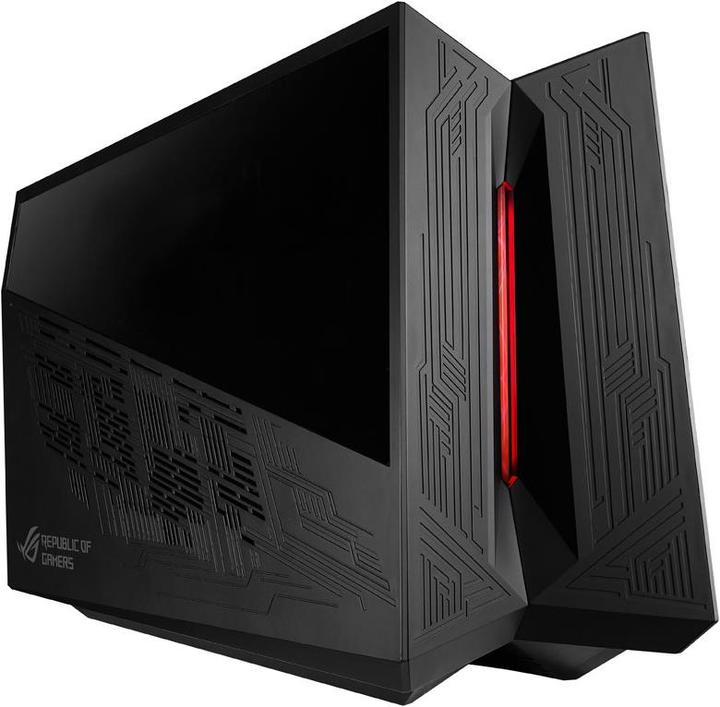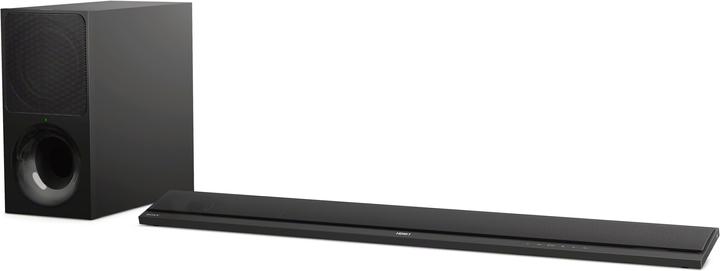

Latte Panda: The mini Windows PC, a sinfully expensive TV and Half Life 2
The Latte Panda not only has a cute name and a hearty boot screen, but is also no bigger than a Raspberry Pi. But unlike the Pi, the Panda runs Windows 10. We tested the mini computer. By hooking it up to a 65-inch television and playing video games.
Raspberry Pi minicomputers are quite nice, but only run - without an idiotic amount of effort - with a Linux version. However, if you want to have a small Windows computer, you could only do so with a lot of effort, even if Microsoft is surprisingly Pi-friendly with Windows 10.
The Latte Panda is even more Windows- and Pi-friendly. It looks like a Raspberry Pi, has comparable performance, but runs Windows out of the box. But it costs a little more.

Product manager and fellow hobbyist Quentin Aellen shows me the Latte Panda. Why is it called that? And more importantly: what can we do with it? Because having such a small computer lying around and then doing nothing with it, especially on a cold grey Friday afternoon... kind of uncool.
"Where Windows is running, Steam is running," says Quentin.
The idea is born. We set off through the Zurich offices to find parts. The decision is made: We're going to build our 4k gaming platform based on a Latte Panda.
At this point at the latest, you'll remember my gaming setup that makes little sense. And yes, this is kind of the sequel to that. We didn't intend it to be, but what better way to max out a palm-sized PC than to play Crysis on it?
We find great stuff
Shortly after deciding that we want to build a gaming setup, I start to worry:
"How hot do you think the Latte Panda will get?"
Because the Raspberry Pi tends to overheat when it's put to the test. At 85 degrees Celsius, the mini computer says "Enough! Off!" and switches off to prevent it from burning out. We can't find a fan in the office, so we more or less have to rely on the Latte Panda not overheating.
"Does it overheat at all?" asks Quentin.
No idea. Let's find out. As a precaution, I have a bottle of water in the room during the final test due to a lack of fire extinguishers. Because the project may be unreasonable, but that doesn't mean we have to be stupid.
The TV product managers have a Samsung frame lying around. Sinfully expensive, the manufacturer says that this is at least the next generation of TV, if not the return of TV Jesus. Fits. Let's go for it, because 65 inches is just big enough for our pocket-sized PC.
We find a Sony brand soundbar and subwoofer in the audio department. After saying "I'll steal these", I'm allowed to borrow them for the test. Because if nothing else, we'll make some decent noise.
Since we assume that the Latte Panda can't output 4k to the TV, let's take a look at the PC peripherals. The external graphics card from last time is still lying around. Because if we're going to play something, we want good graphics. The graphics card will prove to be rather useless in the course of the test, but we don't know that at the moment.
So, that's our cable clutter. Looks like this.
A USB hub that we don't have on sale. It doesn't really matter. Not everything always has to come from us and sometimes we don't really know where the stuff in our offices comes from. We need the hard drive for game data, as the internal memory of the Latte Panda isn't really designed for games.
We suspect that gaming is not really one of the main uses of the Latte Panda.
Why does the Latte Panda switch off?
When working on projects like this, it helps if you rattle your device. Because if you work minimalistically here, you'll never finish. The logic in our build team goes something like this: We bring in everything that we can imagine could be useful. We still can't use stuff, but if we have to keep getting stuff, we waste so much time. More time than we want to spend.
So, let's wire it up. Since we're fiddling around with the frame, editor Luca Fontana wants to be there too. Good, because the thing isn't particularly heavy, but 65 inches isn't exactly compact. We occupy a meeting room like squatters and nest in there. We're nice enough to warn people outside the office door that we might be a bit noisy.
And could possibly cause a fire.
However, the wiring is quite simple. The Latte Panda has an HDMI port, which we use to bring picture and sound to the frame. In the first run, we want to know how well we can play if we simply test without the external graphics card.

The screen stays black. Reboot. We see the Windows login screen. Then black screen again. Reboot. Login, then update. Black screen. Since the Latte Panda has neither particularly noticeable LEDs nor a fan that could serve as an indicator of whether the device is currently running or not, we're not sure whether this is on or not.
Quentin touches the small computer.
"Well, it's warm, but hot is different," he says.
After some back and forth, we realise that the device is running, but then switches off at some point. Our first hypothesis turns out to be correct: The device is not receiving enough power to run the entire setup. This is because the USB hub needs additional power. So does the external hard drive.
The Latte Panda is currently supplied with power in a somewhat original way. The USB cable that supplies power to the small PC is connected via USB to the TV, which also has USB ports. What could possibly go wrong?
Well, let's just go to product management and steal more stuff together. Thank you, Mobile Systems. With a USB charger as a power supply, the thing should work wonderfully. Except we don't end up using the USB charger. We draw power directly from the external graphics card via USB to the Latte Panda. Most expensive connector bridge ever.
Why the external graphics card is useless
Updates on it. Steam on it. Showed our setup to product management and everyone was like "...why?" Nothing stands in the way of our gaming afternoon. First we test FTL, a game in which we have to manage a spaceship with all its functions and such, so that we can bring secret cargo through eight sectors. Fun and the Latte Panda plays along well. The only problem is that we're not quite sure what resolution we're playing in. Because FTL comes in a retro pixel look.
"Is that 4k?" asks Quentin.
Good question. Because 4k, i.e. a screen resolution of 3840x2160, probably looks quite similar in FTL to any lower screen resolution. Thank you, Retrografik. But the check shows: Yes, the Latte Panda delivers 4k to the frame. We are impressed.

I touch the latte panda. Temperature check. Already warm, but no warmer than a warm plate coming out of the microwave.
If the Latte Panda can do 4k, then we can play better games. For reasons that are no longer entirely clear, we decide in favour of "Half Life 2". The game may be ancient, but we play it anyway.
Where 4k becomes difficult and the frame is underchallenged
No idea what's going wrong, but the fullscreen mode in Half Life 2 somehow looks like we're playing in windowed mode, but everything else is black. Rather strange. By the end of the test, we can't fix this with all the options available to us. Graphics options, screen settings, Samsung frame settings... everything looks fine. Except that the picture just sucks.
We play Half Life for about half an hour anyway, steal gummy bears from product management and continue gaming.
"Don't you want to draw a conclusion?" asks Luca, because he has a second TV that he would like to test. He hadn't even been able to test the frame properly yet. We are told to pack up our tangled cables, leave the sound and get lost. We decide to skip the test with Crysis or Doom.
All right, then. Conclusion time. The setup makes zero sense and you shouldn't copy it. Because who's stupid enough to use an external graphics card as a power supply? We are. Obviously.
But: We now know that the Latte Panda is amazingly powerful. The fire in the meeting room didn't happen and once the power problem was fixed, the little device didn't mess around. It works, it employees well, even when you do things to it that you really shouldn't do to it. It reminds me of the Lenovo Thinkpad T-series in terms of feel, not performance. Workhorses. Not pretty, but reliable partners in extreme cases.

Of course, sometimes the Latte Panda slowed down a bit, but it recovered quickly and we never had the feeling that the little device was thinking about giving up. It really struggled with videos in 4k, but the Panda plays the videos with umpteen picture errors. Even though we completely misused the little computer and didn't give it a second to catch its breath, the Latte Panda kept up.
You rock, little panda!
Journalist. Author. Hacker. A storyteller searching for boundaries, secrets and taboos – putting the world to paper. Not because I can but because I can’t not.






